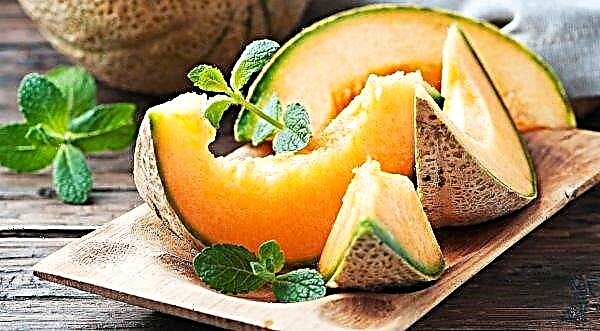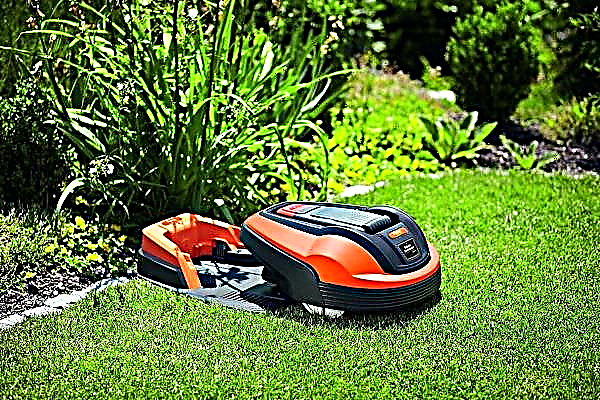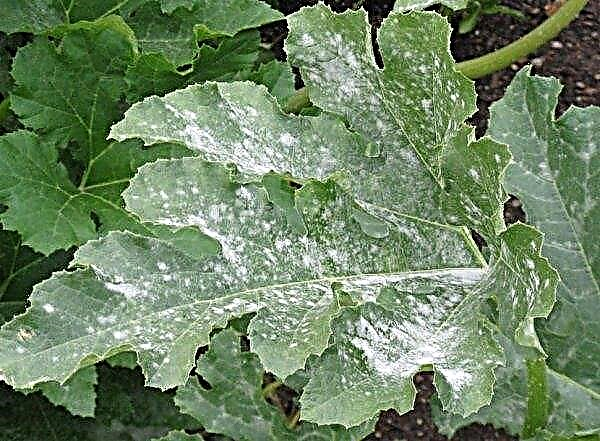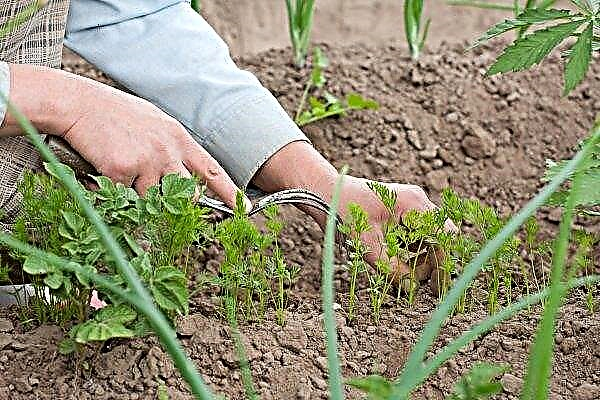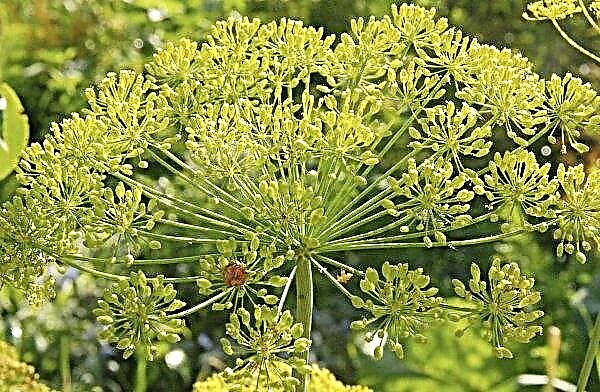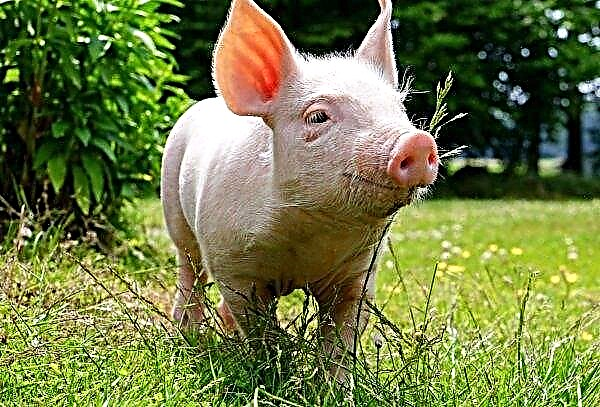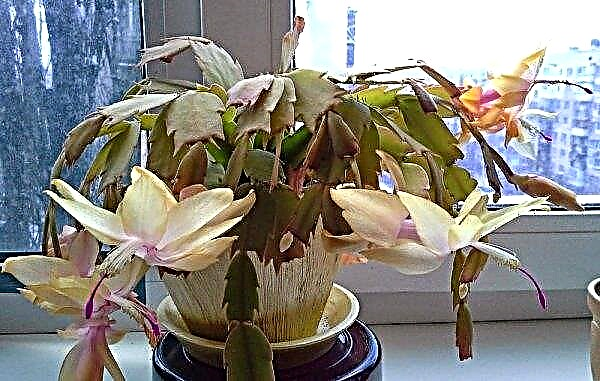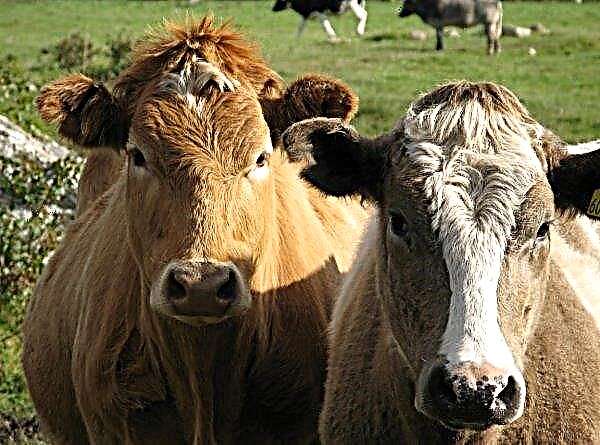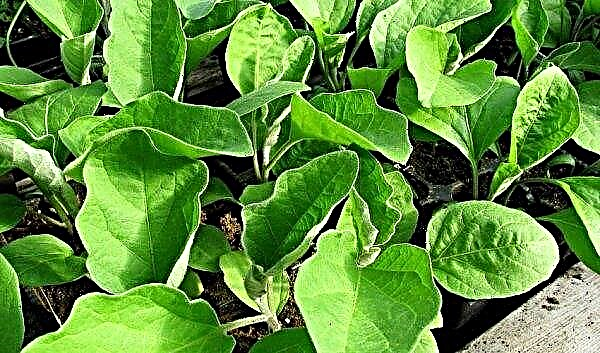Hydrangea has long been valued by Russian gardeners as a highly decorative flowering culture for a garden and homestead, the main thing is to choose the most suitable flower variety for yourself. This article will discuss one of the most popular species of this plant - garden hydrangea (Hydrangea macrophylla), which combines many interesting varietal variations. Of course, in order to achieve maximum decorative effect from them, it is worth adhering to some rules of planting and further care, which will be described below.
Popular types and varieties
Garden hydrangea (also large-leaved) is an ornamental perennial shrub that reaches an average of two meters in height. The stems are predominantly upright, the flowers of dome-shaped inflorescences are pink, lilac, blue or white, which depends on the level of acidity of the soil in a particular place of their growth. Leaf plates are simple, rich green in color, and their shape depends on the characteristics of a particular variety of garden hydrangea.
The most popular include the following:
- Expression - winter-hardy plant with flowers on last year's shoots and branches of the current year. The flowers are terry and look more like water lilies. Growing on acidic soils, their color is blue-violet, while after transplanting to more alkaline soils it turns pink. Flowering begins in July and lasts until late autumn.
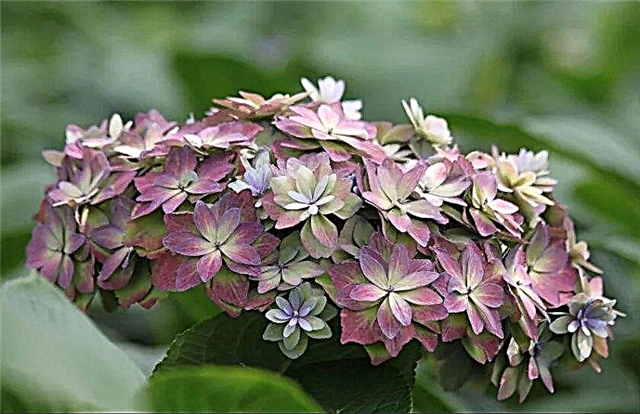
- Red sensation - A hybrid variety obtained during the mutation of the Sensation hydrangea. The height and width of the shrub is about 80 cm, and burgundy stems are a characteristic feature. The flowers are small red, with a yellowish middle. Inflorescences are spherical, decorate the bush from the beginning of summer until mid-autumn.
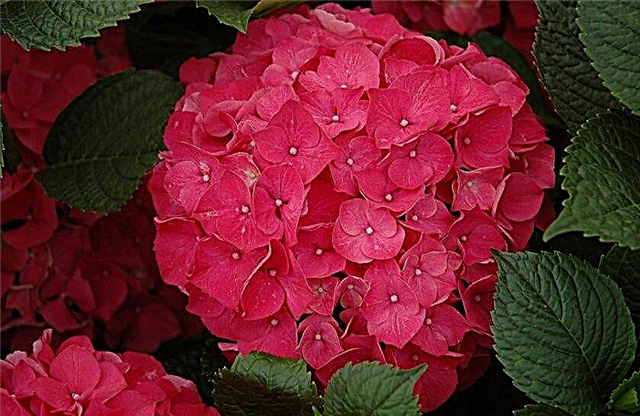
- Ever peppermint - a shrub reaching a height of only 60 cm. Like many other varieties of garden hydrangea, the color of the flowers depends on the acidity of the soil, so they can be either blue or pink, but always with white bordering on the edge of the petals. The central shoots are erect, and the side shoots are more razlogi. The leaf plates are bright green in color, with a slight sharpening at the end.
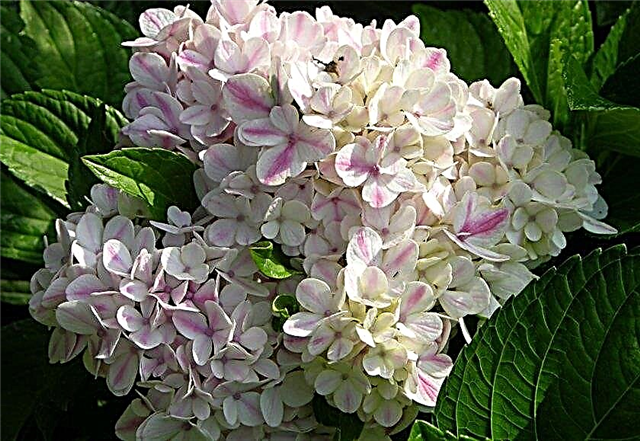
- Endless summer - a variety characterized by the appearance of flowers on any shoots, both on young branches and on specimens of past years. The flowers are large, double, mostly blue, but can be white.

Sometimes the term "garden hydrangea" means all types of plants of the genus Hydrangia, which can be successfully grown in open ground. If we consider the culture from this point of view, then we can distinguish from them more tree-like, paniculate, petiolate and oak-leaved species, each of which has many of its varieties.
Did you know? The first hydrangeas were imported into Europe from Japan, and this happened in 1820. Mass selection began only after 80 years, with the use of the large-leaf (garden) species, already widely known at that time.
Most varieties of garden hydrangeas are characterized by increased frost resistance (can withstand winters up to -30 ° C), therefore, in the greater part of Central Russia and in the southern regions, even young plants do not shelter for the winter. Unfortunately, this cannot be said of the northern regions, therefore, in order to protect the fragile seedlings, it is better to cover them with any suitable material.
Growing hydrangea in the garden
In general, the cultivation of garden hydrangeas is not much different from the cultivation of other species of these flowers, which means that for the success of the whole business it is worth knowing how, when and where it is better to place a flowering crop. The primary role in the normal growth and development of hydrangea is played by the composition of the soil, the level of lighting and temperature at the place of planting.
Choosing a place to grow hydrangea
The planting of young hydrangea in the country can be performed both in spring and autumn, True, the latter option is more characteristic of southern regions with mild and snowy winters. In order for the flower seedling to quickly take root on the site and tolerate seasonal temperature drops, it is worth organizing holes in acidic and well-moistened soil.
The site itself should be spacious, slightly shaded, with the obligatory absence of stagnation of moisture after melting snow or as a result of too abundant watering. Excess water from the rhizome threatens with decay and death of the entire plant.
Soil preparation for hydrangea
An ideal substrate for flowering garden hydrangea should be sufficiently nutritious, light, permeable and with an acidity level within pH 5.5. If the soil in the selected place is too alkaline, it is acidified with an aqueous solution prepared from the calculation: 1 teaspoon of citric acid per 10 liters of water. Ammonium sulfate, potassium sulfate, and iron sulfate are suitable fertilizers for increasing acidity, 20-30 g of which are diluted in a bucket of water, and then the place of planting is watered.
Soil preparation for spring planting is better to start in the fall, digging up the soil, removing vegetable residues from previously grown crops from it and introducing a sufficient amount of mineral and organic nutrients. From organics, peat will be the best solution, and superphosphate from mineral compounds.
Important! Whatever fertilizer is applied under hydrangea, any composition must be pre-mixed with the substrate, thereby limiting its contact with the roots of the culture. Otherwise, the flower can get a rhizome burn and die quickly.
A mixture of peat, chernozem, turf, humus and river sand, interconnected in equal proportions, can be filled at the bottom of the landing pit. In the spring, before the direct planting of young plants, the soil is additionally enriched with fertilizers "Kemira", "Acid plus" and some other mixtures that can be used to increase the acidity of the soil.
Planting hydrangea seedlings
Features of the planting process depend on the type of seedling purchased. If he has a closed root system (in the container), then he is simply moved to the prepared hole together with a lump of soil, then falling asleep with the missing amount of soil.
With the open rhizome of young hydrangea, there are slightly more actions, and they are performed in the following sequence:
- Having poured a small hill from the previously prepared earth into the pit, place the seedling on its top, in the center of the landing pit.
- Spread the roots so that they evenly “creep” over the entire surface of the soil.
- Gently fill the rhizome with the remaining soil, spreading it in layers, dosed, each time gently shaking the plant to evenly distribute the substrate between the roots (there should be no air voids).
- Lightly compact the soil surface, water the planted plant abundantly and, if necessary, mulch with a five-centimeter layer of wood sawdust or peat, which will help maintain moisture in the soil for a long time.

In the first few days after planting a seedling, no additional steps to care for it are required, but later you will have to decide on what actions to take.
How to care for hydrangea in the garden
Caring for garden hydrangea provides for the implementation of standard actions: watering, fertilizing, pruning flowering bushes and sheltering them for the winter, if necessary. In order to fully satisfy the flower’s needs for moisture and nutrients, while maximizing the decorative effect of the crop by shortening its shoots, it is important to know the specifics of each of these actions.
Fertilizing hydrangeas
With the spring planting of garden hydrangea on the site this year, you no longer have to think about feeding it, since the plant will have enough introduced nutrients during planting. In the future, up to three fertilizers per season can be performed each year, which guarantees splendor of flowering and the formation of large inflorescences on the bushes.
For the first time, garden hydrangea is fed in the early spring, before the start of active vegetative processes. In this case, 20–25 g of urea, 30–40 g of superphosphate, 30–35 g of sulfuric potassium are consumed per 1 m² of plantings. The second time it is possible to fertilize shrubs during the period of their budding, using 60–80 g of superphosphate, 40–45 g of potassium sulfate in the same area of plantings. In the third, hydrangeas fertilize closer to the end of summer, covering 15–20 kg of rotted manure or compost (in the same 1 m² of territory) in the ground of the near-trunk zone.
Important! The last top dressing of the season should be carried out after flowering of the bushes, that is, in the late autumn. Having fertilized the plant, the trunk section is mulched with humus and peat.
If possible, it is worth fertilizing the plantings shortly after the next watering, or combining with it. To increase the strength of the shoots, the bushes are often poured with a weak solution of potassium permanganate, even despite the fact that garden hydrangea has good immunity against typical ailments and pests.
How often should hydrangea be watered
It is no secret that hydrangea belongs to hygrophilous flowers, therefore, to ensure lush flowering in the summer, it is worth organizing abundant watering of bushes. On average, the regularity of such procedures is 2-3 times a week, with a consumption per adult bush of at least 30–50 liters of clean, well-maintained and heated sun.
However, it is important to take into account weather conditions and outdoor temperatures, which may well lead to a reduction in watering to 1-2 per week. This also applies to cases where the near-trunk zone of garden hydrangeas is regularly mulched with peat.
Pruning various types of hydrangea
For all hydrangeas, the most characteristic pruning methods will be: shaping, sanitary and anti-aging. At the same time, if the removal of dry and broken branches is allowed already in the first year of growing the crop, then with decorative cutting of the shoots, it is better to wait until next year so that the recently planted seedling can adapt well to the new growing conditions.
Did you know? The Latin name for hydrangea is "Hydrangea", which literally means "a vessel with water." According to some sources, this definition appeared due to the increased moisture loving nature of the plant, and according to others it is a consequence of the presence of seed boxes in the form of a jug.
In the early spring of the second year of hydrangea cultivation, you can plan the first pruning of branches, drastically shortening last year's growths (no more than 2-3 well-developed buds should remain on each of them above the old part of the stem). In the process of this procedure, a foundation is created from the strongest branches, which will subsequently form a uniform crown directed outward.
Starting from the third year of cultivation of garden hydrangea, the following measures can be added to the usual sanitary pruning:
- a haircut in order to stimulate the growth of flowering branches (last year's specimens shorten to 2–4 buds so that new strong flowering branches appear later on);
- removal of the frozen tips of branches;
- thinning and formation of the crown of the bush with its thickening and active growth of branches inward (weak, excess branches from the rhizomes are desirable to completely cut out, not allowing the crown of the plant to be densely compressed);
- a rejuvenating haircut, when after four to five years of growing a bush on one plant each year, only 6-10 of the strongest shoots are left, and 2-5 of them are last year's growth. Removing the oldest specimens (3-4 years old), they need to be cut to the very bottom, and the places of the cuts should be treated with garden varnish to prevent infection of the remaining plant.

Features of forming pruning largely depend on the type of hydrangea grown in the garden. For instance:
- To tree-like plants, inflorescences of which are formed on two-year-old shoots or more adult branches, anti-aging pruning with the removal of three- or four-year-old branches must be used. In addition, all shoots thickening the crown, zero shoots growing from the rhizome are subject to cutting. Pruning for flowering is performed on the branches of last year with cutting ends to 2-3 pairs of developed buds.
- Panicled hydrangeas, which are also characterized by a high rate of formation of extra branches, need an annual crown formation no less than tree-like forms. If their cultivation is planned in the form of bushes, then when planting a seedling, the root neck is slightly deepened into the ground, thereby stimulating the active development of basal shoots. In the future, you need to leave only the strongest sprouted specimens, and the rest immediately cut. Each year, large branches shorten up to 1-3 pairs of buds, and excess shoots are immediately cut. In the case when panicled hydrangea is formed as a standard tree, the corresponding pruning begins from the second year of plant growth, leaving only the strongest central shoot (in spring it is shortened to the most developed bud). In the future, the stem grown from it is directed vertically upwards, tied with soft ropes. The shoots that appear by summer are regularly nipped and thereby contribute to the growth of the culture stem.

Preparation and shelter of hydrangea for the winter
Adult frost-resistant varieties of hydrangeas in the southern regions usually do not cover, but for early flowering, laid on last year's shoots of flower buds, this procedure is best done, moreover, immediately after the main autumn preparation for winter cold.
Important! If the winter is snowless, then on top of an organized shelter you can lay out the spruce branches and branches, if possible additionally adding snow collected in the vicinity of the bush.
You can do this by adhering to the following action plan:
- Having removed all inflorescences and leaves from the bush, it is necessary to collect the shoots in a bunch and gently bend to the ground, on the surface of which there are already laid out boards (they will prevent the shoots from contacting with frozen soil).
- Having fixed the bush laid on the boards, it is completely covered with dry foliage and sawdust mixed with earth. You can also fix on top of the shoots a wooden shield or a layer of non-woven material, and only then pour soil. This option is even more preferable than the first, since hydrangea does not get dirty, does not get wet and will not come into contact with pathogens that could be stored in the soil poured for insulation.
- On top of the bush hidden under the foliage, you can stretch the film cover, fixing the material along the edges. To circulate air on its surface, several vent holes are organized, tightly closing them only during severe frosts.

If the previous version of preparing garden hydrangea for wintering for some reason does not suit you, you can use the alternative method by following these steps:
- Cover the plant with roofing material without bending to the ground. The material can simply be wrapped around the shoots, thereby creating a kind of cylinder. Tightly pull the roofing material is not worth it. It is desirable that between its walls and branches of the bush at least 10 cm of free space is left.
- Dry leaves fall asleep inside the cylinder, and as soon as frosts strike, they tighten the open top with non-woven material.
- Stepping back from the organized framework of 15–20 cm, you can establish strong columns and once again wrap the “hidden” plant with roofing material, filling the free space inside with the same leaves.
- At the end of the procedure, it remains only to cover the entire structure with lapnik, to hush the bushes.

Such a shelter is more relevant for the northern regions of Russia, while when growing winter-hardy varieties of garden hydrangeas in the southern part of the country, it will be enough for adults to simply wind up the plants with dry soil mixed with fallen foliage and sawdust. In general, growing garden hydrangea is not difficult, but this does not mean that the plant does not have to care. To get highly decorative bushes of a flowering culture, the gardener will have to take into account all its requirements, the main of which are described above.





